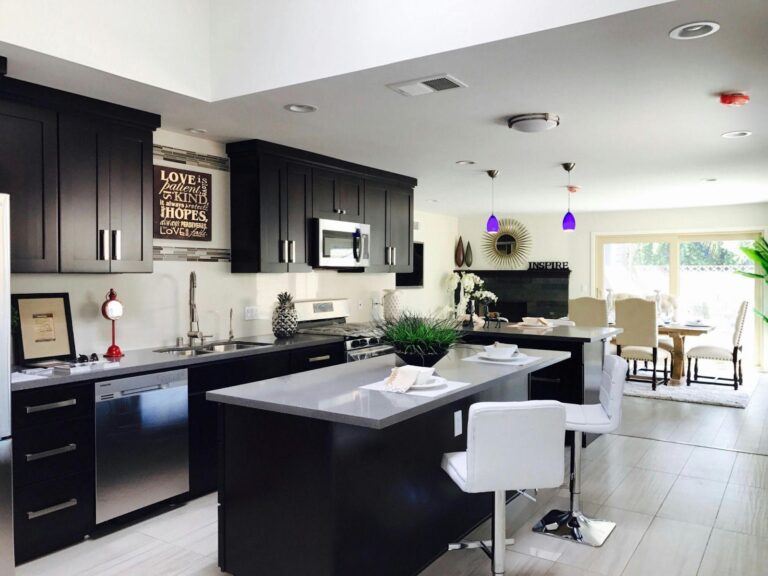
Natural light plays a big role in how a home feels. A bright space looks more open, inviting, and comfortable. Homes with more sunlight also feel warmer and more vibrant, which can improve mood and well-being. More daylight means less need for artificial lighting, which helps lower energy costs.
Despite these benefits, many homes don’t get enough natural light. Small windows, poor room layouts, and heavy curtains can make rooms feel darker than they should. Some homeowners assume adding brightness requires expensive renovations, but simple adjustments can make a big difference. This article covers practical ways to increase natural light and create a brighter home.
Choosing the Right Window Placement and Style
Windows are the main source of natural light, but their placement and design impact how much sunlight enters a home. Larger windows bring in more daylight, making dark spaces feel open and airy. However, size alone isn’t enough—positioning also matters.
Placing windows higher on the wall lets light spread evenly throughout a room. Skylights are another great option, especially in areas where traditional windows aren’t possible. For homes with limited wall space, transom windows above doors add extra brightness.
Modern window designs also allow for more light. Many older homes have thick-framed windows that block part of the glass. Switching to slim-framed styles with more glass lets in extra sunlight without needing bigger openings.
Upgrading Windows for Maximum Light
Older windows don’t always let in as much sunlight as they should. Over time, dirt, wear, and outdated glass technology reduce the amount of natural light that passes through. Upgrading to newer models can fix these issues while improving energy efficiency.
A window replacement company can help homeowners choose styles that allow more sunlight while still providing insulation. Larger glass panels, slim frames, and clear coatings increase brightness indoors without adding glare. Some modern windows even have low-E glass, which keeps rooms bright while reducing heat from the sun.
Replacing windows might seem like a big investment, but it pays off in several ways. More natural light reduces the need for lamps and overhead fixtures during the day, cutting electricity costs. Well-designed windows also improve indoor comfort by blocking excessive heat in summer and keeping warmth inside during winter.
Light-Reflecting Interior Design Choices
How a home is decorated affects how well light spreads through a space. Dark colors absorb sunlight, while light colors reflect it. Choosing soft, neutral tones for walls, ceilings, and floors helps rooms feel brighter.
Adding reflective surfaces can also make a difference. Mirrors placed across from windows bounce light around, making spaces look larger. Glossy finishes on furniture or floors have a similar effect. Even small details, like glass tabletops or metallic decor, help distribute light more evenly.
Heavy curtains and thick blinds block a lot of natural light. Swapping them for sheer fabrics lets sunlight filter in while still providing privacy. If blackout curtains are necessary, using tiebacks during the day keeps windows uncovered and allows for more brightness.
Optimizing Furniture Placement for Better Light Flow
The way furniture is arranged affects how light moves through a space. Large, bulky pieces placed too close to windows can block sunlight and make a room feel darker. Rearranging furniture to keep windows clear allows more light to reach deeper into a home.
Using open-frame furniture instead of heavy, solid designs also helps. Glass or acrylic tables, open bookshelves, and lighter materials let light pass through instead of creating shadows. Light-colored upholstery and wood finishes reflect sunlight rather than absorbing it.
Even small adjustments, like shifting a tall bookcase away from a window or using lower-profile chairs, can make a noticeable difference. Placing mirrors near light sources, such as opposite windows, further amplifies brightness.
Using Smart Lighting to Enhance Natural Brightness
Natural light levels change throughout the day, and artificial lighting can help fill in gaps. Instead of relying on bright overhead fixtures, layered lighting works best. Soft, warm LED bulbs placed near windows help blend natural and artificial light for a seamless effect.
Motion-sensor lighting near entryways and hallways keeps dim areas bright without the need for constant overhead lighting. Installing dimmers allows control over brightness, making it easier to adjust as daylight fades.
Strategic lamp placement also boosts natural brightness. Floor lamps with upward-facing bulbs reflect light off ceilings, while wall-mounted fixtures distribute light evenly without taking up space.
Exterior Adjustments That Affect Indoor Light
What’s outside a home impacts how much natural light enters. Overgrown trees, bushes, or exterior awnings can block sunlight from reaching windows. Trimming branches and clearing obstructions improves indoor brightness without any interior changes.
Light-colored exterior paint or siding also affects how much light is reflected into a home. Darker exteriors absorb sunlight, while lighter tones help bounce it toward windows. Even small details, like choosing a light-colored roof or installing reflective pathways, can subtly increase indoor brightness.
For homes with patios or balconies, using glass railings instead of solid barriers allows more sunlight to pass through. If privacy is a concern, frosted or lightly tinted glass keeps spaces bright while maintaining coverage.
Maximizing Light in Small or Windowless Rooms
Some rooms lack direct sunlight, making them feel dark and cramped. Even without large windows, there are ways to brighten these spaces. Using light-colored paint, especially in shades of white or soft pastels, helps reflect any available light. Glossy or satin finishes on walls and ceilings create a subtle shine that enhances brightness.
Adding multiple light sources, such as wall sconces, floor lamps, and under-cabinet lighting, mimics the effect of natural sunlight. Installing mirrors or reflective decor amplifies light from nearby rooms. For interior spaces, glass-paneled doors or open archways allow brightness to flow between areas.
Maximizing natural light isn’t just about making a home look better—it improves comfort, reduces energy costs, and creates a more inviting space. Small changes like adjusting furniture, upgrading windows, and choosing the right interior finishes help brighten a home without major renovations.
A well-lit home feels open, airy, and more connected to the outdoors. By paying attention to both indoor design and outdoor surroundings, homeowners can create a space that takes full advantage of natural light throughout the day.
Write and Win: Participate in Creative writing Contest & International Essay Contest and win fabulous prizes.


